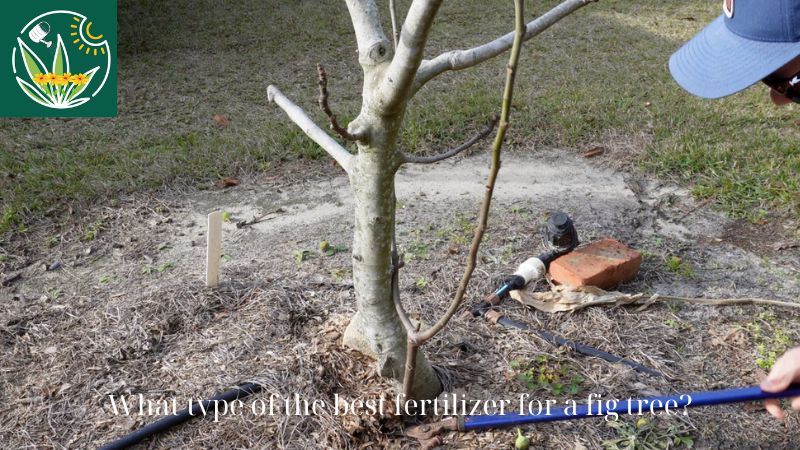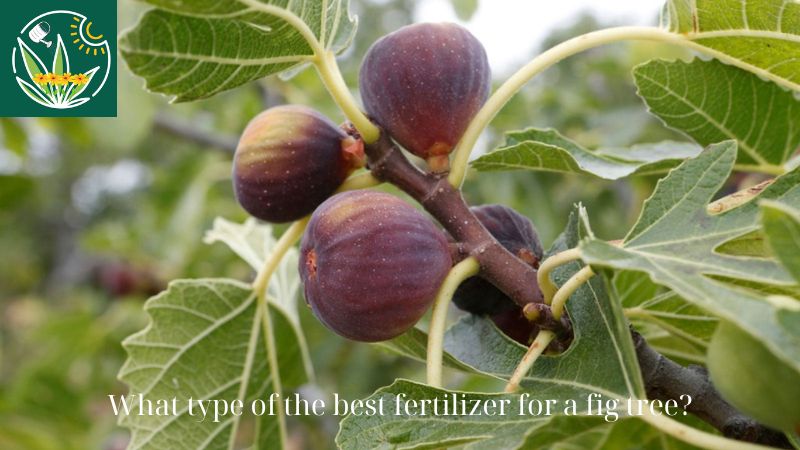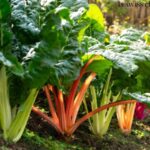Fig trees are easy to grow and care for, thanks to their ability to grow on their own without much support from analysis. However, fertilizer for a fig tree still plays an important role in providing nutrients, especially when the tree shows signs of nutrient deficiency or friendly growth.
In this article, tree02.com will help you learn about fertilizer for a fig tree, how to choose the best analysis and effective analysis methods, helping your fig tree stay healthy and produce fresh fruit.
What type of the best fertilizer for a fig tree?
The best fertilizer for fig trees will typically contain a good balance of macronutrients and micronutrients. Nitrogen (N), phosphorus (P), and potassium (K) are the three macronutrients commonly referred to as NPK, and they play an important role in the growth and development of a tree. Nitrogen is needed for leaf growth and photosynthesis, phosphorus is important for root growth and fruit production, and potassium helps regulate water uptake and overall plant health.
A good NPK balance for figs is actually as simple as 10-10-10 or 20-10-20. In my yard, I like a 10-5-12 ratio. For ground-grown figs, I highly recommend getting a soil test. A soil test can be a big help in figuring out exactly what ratio you might like. In fact, you may not even need an NPK fertilizer. Fig trees are incredibly good at finding the water and nutrients they need. They can thrive in even the worst soil, but in the world of growing figs in containers, it’s a different story.
Reasons to Be Careful When Fertilizing Plants
While fertilizer can help plants grow better, too much fertilizer, especially deep fertilizer, can be harmful to fig trees. Excess nitrogen can reduce yields and create a tree that is extremely susceptible to cold weather. Additionally, fertilizer can promote excessive growth of branches and trunks, making them susceptible to cracking and damage.
For one- and two-year-old fig trees, avoid fertilizing with an ounce of fertilizer each month from the time the tree first puts out new leaves in early spring until late July. This allows the tree to absorb nutrients without becoming overwhelmed.
For mature fig trees, fertilization should be divided into three stages throughout the year: late winter, mid-spring, and mid-summer. About 1/3 pound of fertilizer per foot of the fig tree’s height. Applying these stages helps the tree maintain steady growth throughout the growing season.
How to Fertilize Fig Trees Effectively
The correct analysis is not only about choosing the right fertilizer, but also about the analysis method to ensure that the tree absorbs the maximum amount of nutrients. When fertilizing, spread the fertilizer on the root zone just below the canopy, avoiding fertilizing directly on the base of the tree.
Most of the tree’s nourishing roots are concentrated in the small, gentle area where water from the leaves falls, so pay attention to spreading the fertilizer mainly in this area. After settling the fertilizer, it is necessary to extract the water from the soil so that the fertilizer is evenly distributed into the soil, helping the tree to absorb it better and avoiding the phenomenon of fertilizer being washed away by rainwater or being extracted too strongly.
If you find that the results are recorded incorrectly, you may have too much analysis. Please reduce the analysis and see if the problem is solved. On the other hand, drought is also a cause that can cause incorrect results. Make sure your fig tree receives at least an inch of water per week to avoid this situation.
Important Notes on Fig Tree Care
Fig trees can thrive with little care, but careful analysis and adequate watering are important to ensure a quality fig tree. As mentioned, analysis should not be done too often and should be done with caution so as not to harm the tree. Only when the tree shows signs of nutrient deficiency or is growing in Python soil conditions is analysis really necessary.

Why Do Potted Fig Trees Need More Fertilizer Than Ground-Based Fig Trees?
Potted figs need more fertilizer than ground-based figs because they have limited root systems and less access to nutrients from the surrounding soil. Additionally, soil in pots can become depleted of nutrients more quickly than soil in gardens or fields. Therefore, potted figs need to be fertilized more frequently and at higher rates to ensure they have access to the nutrients they need to thrive and grow.
Do “Bloom” Fertilizers Work?
Keep in mind that I don’t think it’s important to get bogged down in ratios, but whatever NPK ratio you decide to use, make sure that phosphorus isn’t the highest number. The common “bloom” fertilizers on the market today add a lot of what turns out to be wasted nutrients. Most soils are high in phosphorus and plants often need less of other important nutrients.
Depending on your preferences, I have included a number of reputable fertilizers below. They have the right ratios and most of the essential micronutrients. For instance, you might not want to use a fertilizer that dissolves in water or you might prefer something organic. You can meet all of your growing season’s fertilizer needs with a single application of Osmocote or Classicote at the start of the growing season.
Other Important Nutrients for Fig Trees Beyond NPK
In addition to the NPK macronutrients, figs also need a variety of micronutrients to grow and thrive. These consist of numerous other trace minerals as well as calcium, magnesium, sulfur, zinc, copper, and iron. While these nutrients are needed in smaller amounts than NPK, they are still essential to plant health and should be included to some extent in the average balanced fertilizer found at big box stores or major online retailers.
Some of my favorite trace elements that you can add separately and in larger amounts to your soil are magnesium, calcium, sulfur, silica, and trace minerals from sources like rock dust or green sand.
Magnesium and calcium are found in lemon trees and fig trees like to grow in soils rich in limestone. If you check the nutrient content of figs and the mineral content of fig leaves, the majority of these minerals are from magnesium and calcium in the soil. Just make sure your soil has adequate amounts of each. Just don’t go overboard with lime or you will raise the pH of your soil too much. You don’t want the pH to go above 7.5.
Sulfur is another one that is needed in larger amounts and a soil additive called gypsum is a great source. Sulfur is an important nutrient for fig trees, it helps synthesize certain amino acids, vitamins and enzymes necessary for growth, it improves overall health and vitality, and is necessary for the production of chlorophyll. It can also increase the plant’s resistance to disease and stress, improve fruit color and quality, and increase yield.
Conclusion
Proper feeding of fig trees is an important factor in ensuring healthy growth and good productivity. Although fig trees do not usually require much analysis, understanding the right timing and analysis will help you maintain a balanced diet for your tree, avoiding excess or deficiency. With proper care, your fig tree will thrive, producing delicious and lush fruit for many years.






